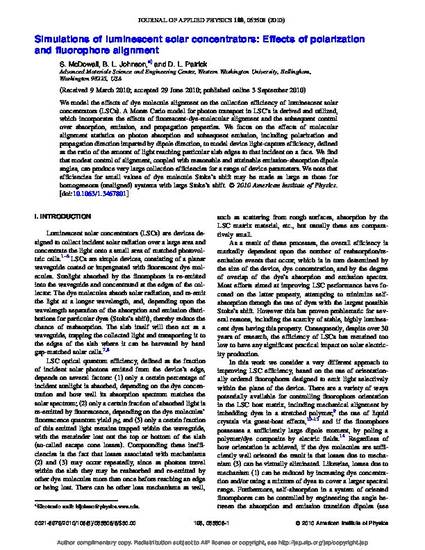
Article
Simulations of luminescent solar concentrators - Effects of polarization and fluorophore alignment
Journal of Applied Physics
(2010)
Abstract
We model the effects of dye molecule alignment on the collection efficiency of luminescent solar concentrators (LSCs). A Monte Carlo model for photon transport in LSC’s is derived and utilized, which incorporates the effects of fluorescent-dye-molecular alignment and the subsequent control over absorption, emission, and propagation properties. We focus on the effects of molecular alignment statistics on photon absorption and subsequent emission, including polarization and propagation direction imparted by dipole direction, to model device light-capture efficiency, defined as the ratio of the amount of light reaching particular slab edges to that incident on a face. We find that modest control of alignment, coupled with reasonable and attainable emission-absorption dipole angles, can produce very large collection efficiencies for a range of device parameters. We note that efficiencies for small values of dye molecule Stoke’s shift may be made as large as those for homogeneous (unaligned) systems with large Stoke’s shift.
Disciplines
Publication Date
2010
DOI
10.1063/1.3467801
Citation Information
Stephen R. McDowall, Brad Johnson and David L. Patrick. "Simulations of luminescent solar concentrators - Effects of polarization and fluorophore alignment" Journal of Applied Physics Vol. 108 (2010) p. 053508-1 - 053508-8 Available at: http://works.bepress.com/stephen_mcdowall/18/
